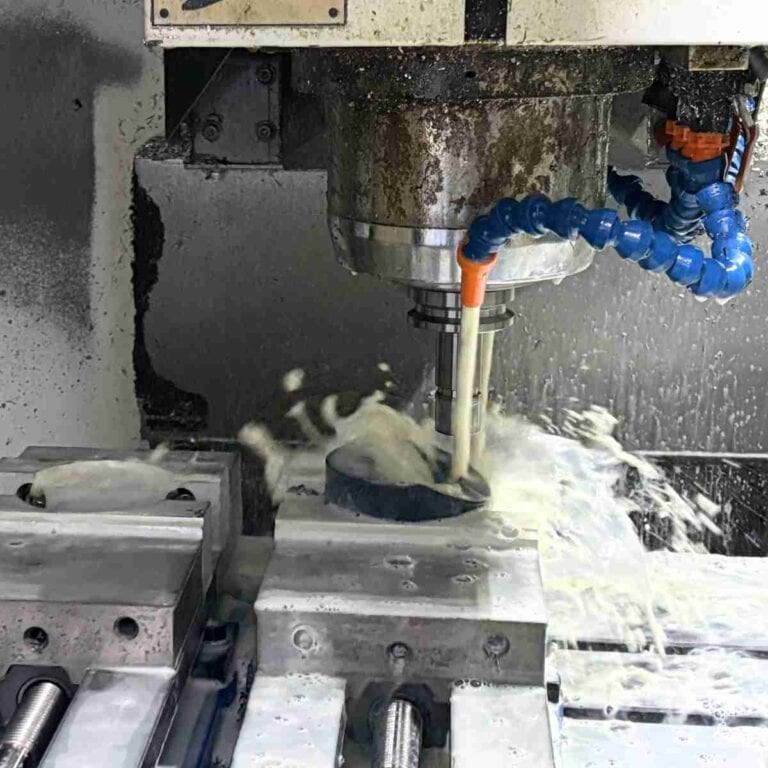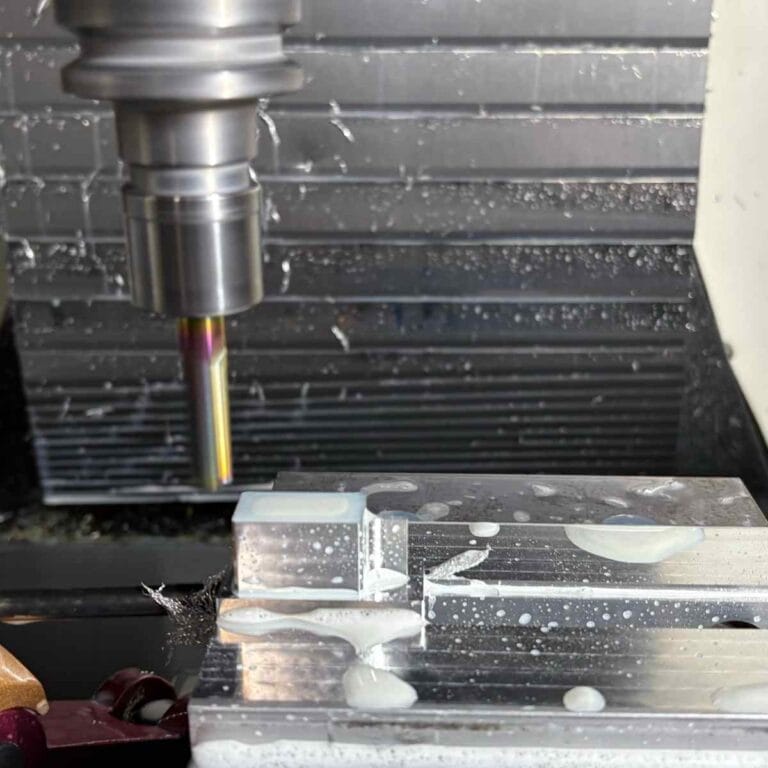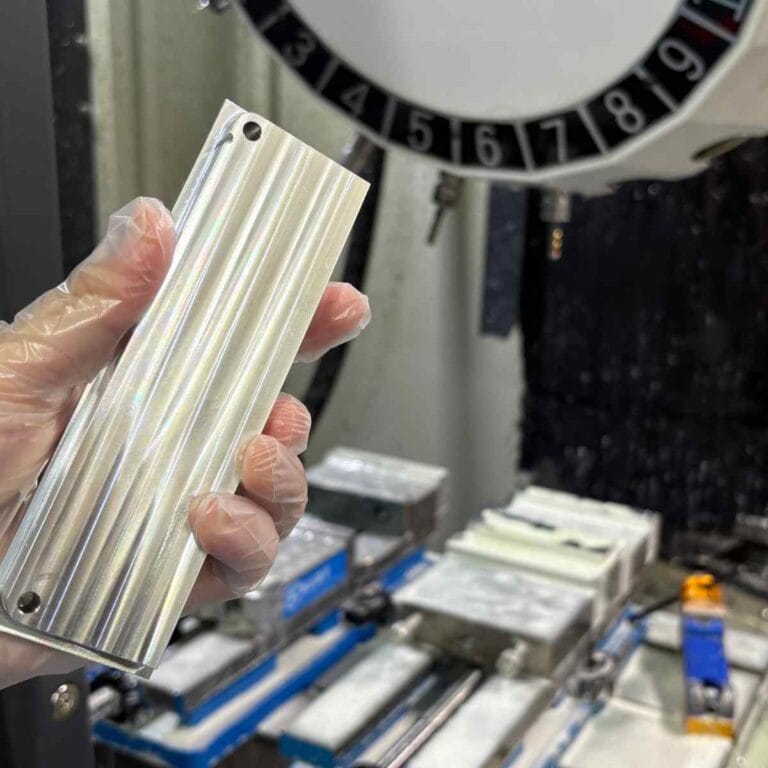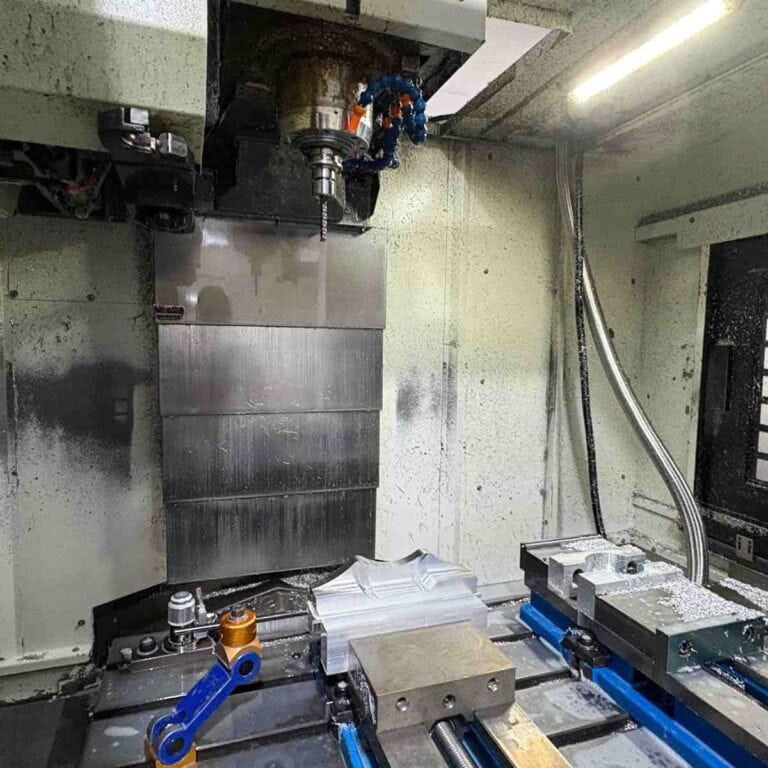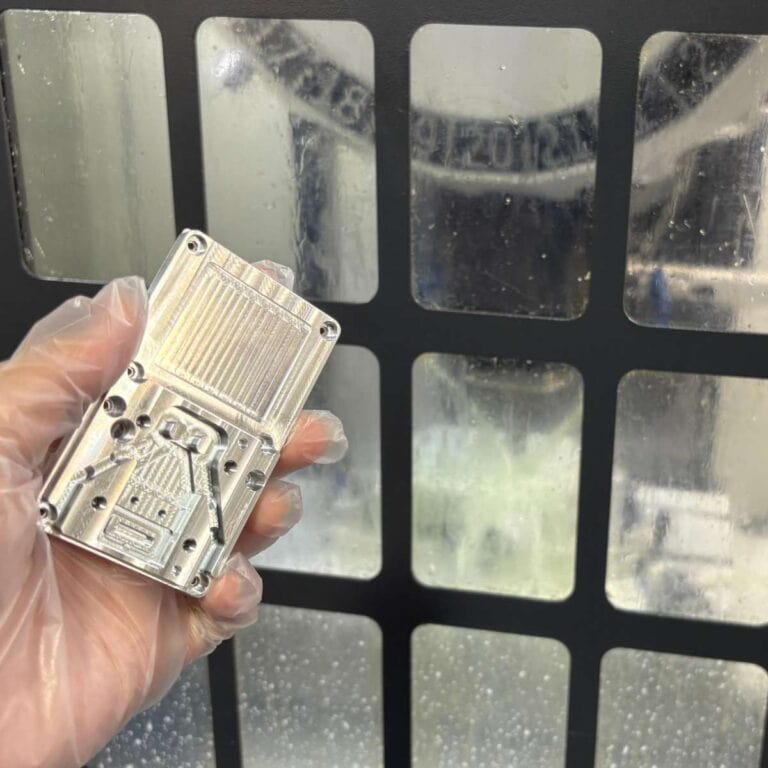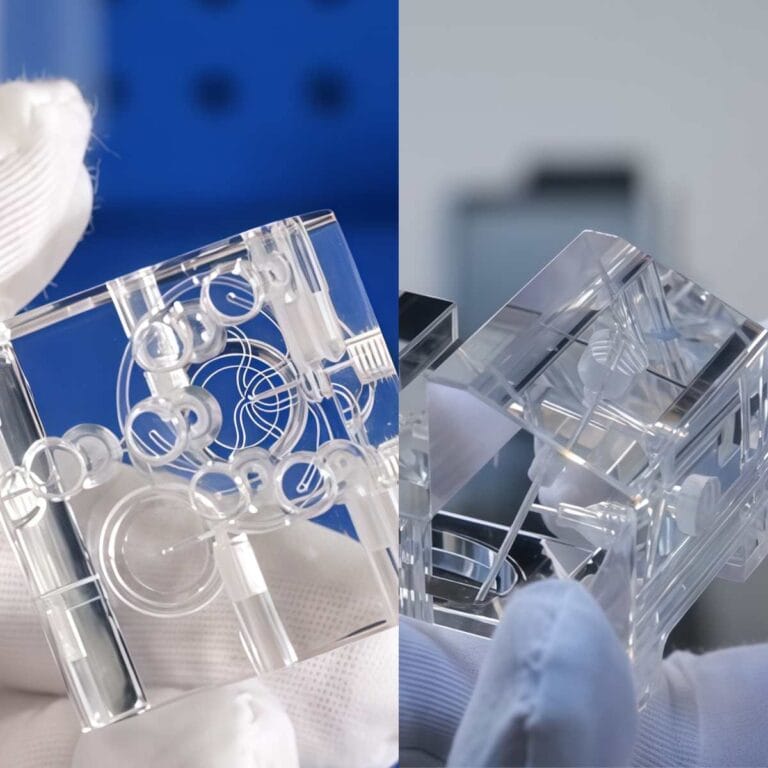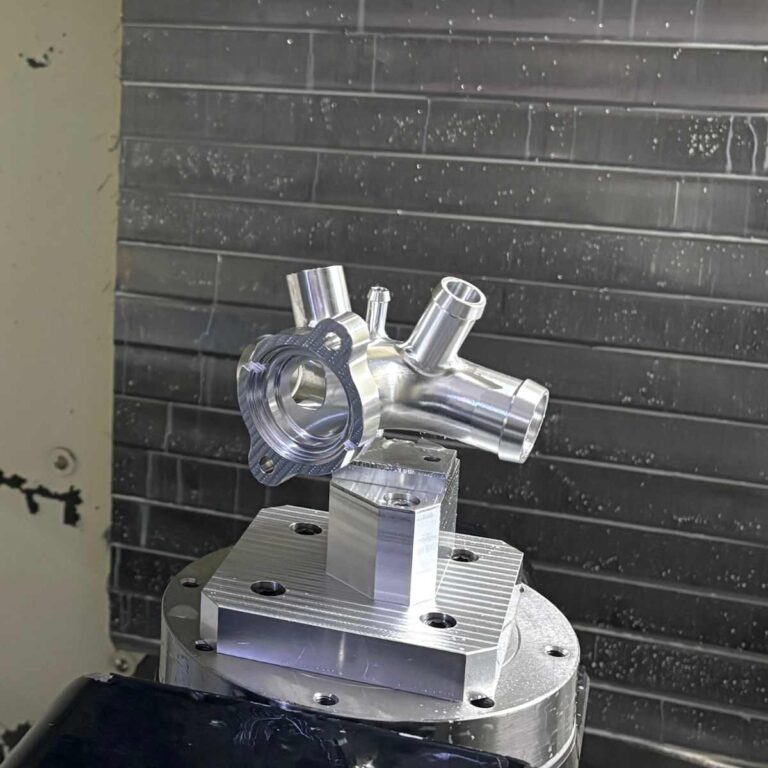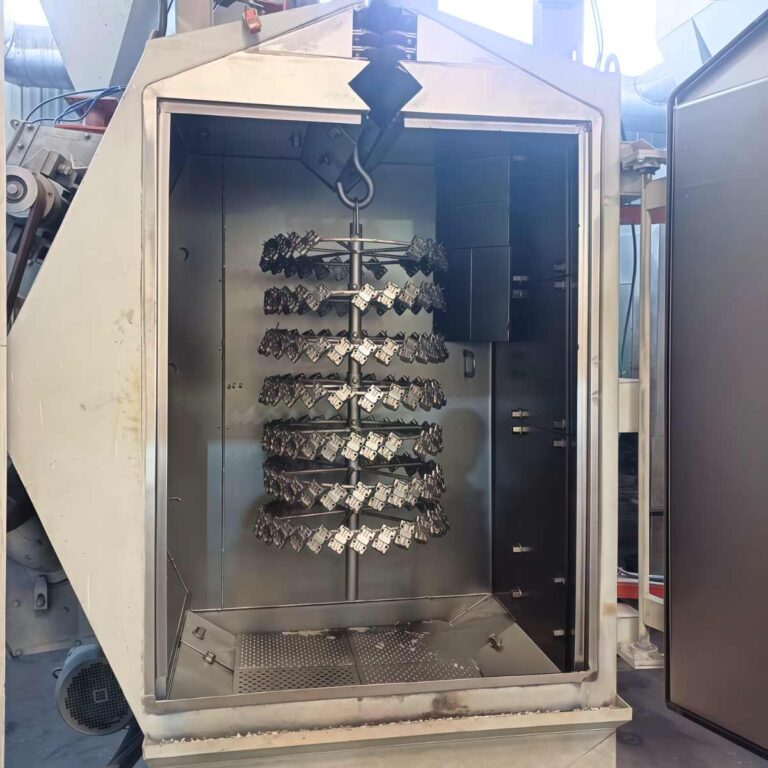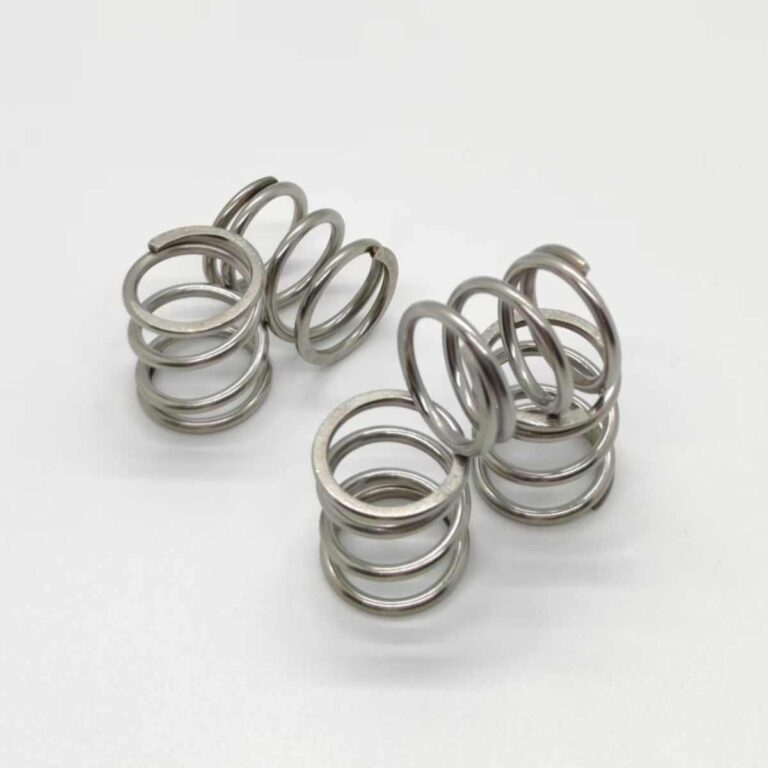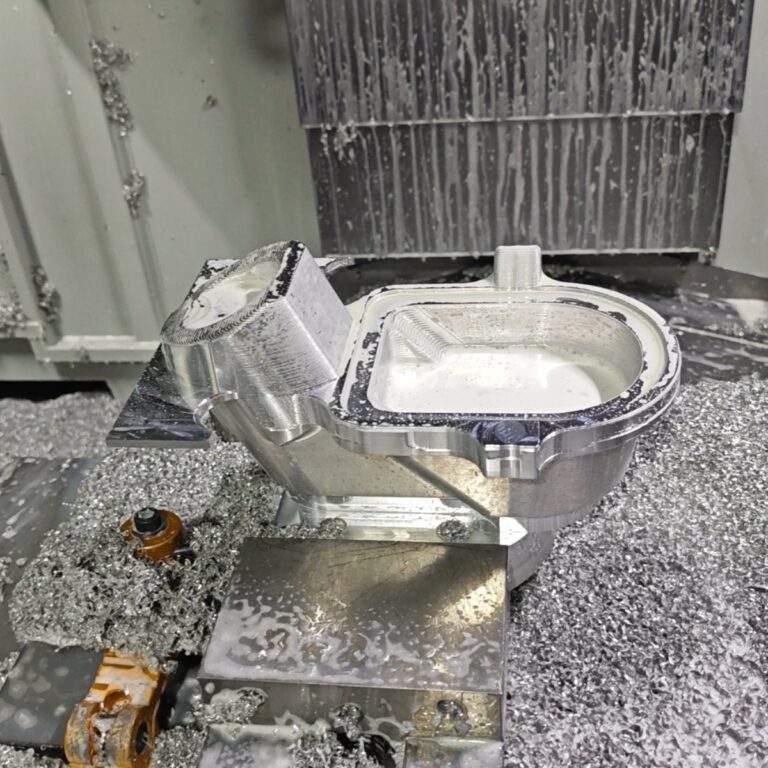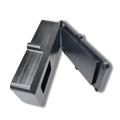Polycarbonate is a versatile and durable thermoplastic known for its high strength, transparency, and impact resistance. CNC machining, particularly milling, is a popular method for shaping polycarbonate into complex parts. However, before milling polycarbonate, it’s crucial to understand the material’s properties, preparation requirements, special considerations, and common challenges. This guide will walk you through the essential aspects of polycarbonate milling, from selecting the right tools to post-processing techniques.
What Is Polycarbonate
Polycarbonate is a durable thermoplastic known for its strength, clarity, and impact resistance. It’s commonly used in industries like electronics, automotive, and medical devices. Polycarbonate offers excellent tensile strength and impact resistance, making it ideal for high-stress applications. It transmits up to 90% of visible light, making it an alternative to glass. Additionally, it maintains strength and clarity across a wide temperature range, providing thermal stability and impact resistance.
Get 20% offf
Your First Order
What Are The Basic Properties Of Polycarbonate
High Strength: Polycarbonate exhibits exceptional tensile strength (60-70 MPa) and impact resistance, making it ideal for high-stress applications. Its ability to withstand significant mechanical forces without cracking or breaking ensures its suitability for demanding environments.
Excellent Transparency: With a refractive index of 1.58, polycarbonate allows up to 90% light transmission, providing superior optical clarity compared to other thermoplastics. This makes it a preferred alternative to glass in applications requiring transparency and durability.
Good Thermal Stability: Polycarbonate exhibits excellent thermal stability, with a heat deflection temperature ranging from 140°C to 150°C. This allows it to maintain its structural integrity and performance in high-temperature environments, making it suitable for applications that require consistent performance under thermal stress.
Impact Resistance: Polycarbonate is known for its outstanding impact resistance, with a tensile strength range of 60-70 MPa. It can absorb significant forces without cracking or breaking, ensuring durability and reliability in applications exposed to high impact or stress, such as protective covers and safety equipment.
What Is CNC Milling
CNC milling (Computer Numerical Control Milling) is a precision machining process that uses computer-controlled cutting tools to shape materials like metal and plastic into complex geometries.
By following pre-programmed instructions, the machine moves the tool along multiple axes to remove material and create parts with high dimensional accuracy and surface quality.
Compared to traditional manual milling, CNC milling offers greater precision, consistency, and efficiency, making it essential in industries such as aerospace, automotive, electronics, and medical manufacturing.
Key Features Of CNC Milling
Automated control via computer programming (G-code).
Multi-axis capability (3-axis, 4-axis, 5-axis) for complex part geometries.
Wide material compatibility: aluminum, stainless steel, titanium, copper, and engineering plastics.
Supports diverse operations such as surface cutting, contour milling, drilling, and threading.
What Preparations Are Needed Before CNC Milling Polycarbonate
Before CNC milling polycarbonate, select proper tools and cutting parameters. Use serrated tools for roughing and smooth ones for fine finishes. Carbide tools offer durability. Apply slower speeds and feeds to avoid overheating, and make shallow cuts (0.2–0.5 mm) to minimize heat and ensure smooth surfaces.
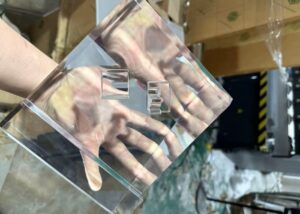
Selecting The Right Cutting Tools
Serrated Tools vs. Smooth Cutting: When machining polycarbonate, I use serrated tools for rougher cuts, as they effectively remove material quickly. However, for achieving fine finishes, especially in transparent applications, smooth cutting tools are my go-to choice. These tools ensure a clean, polished surface, which is critical for applications that require optical clarity.
Tool Material Choices: For polycarbonate, I prefer carbide tools over high-speed steel (HSS) due to their superior wear resistance and durability. Carbide tools offer enhanced longevity, maintaining sharpness for longer periods, which reduces tool wear and ensures consistent cutting performance, especially during extended machining runs.
Adjusting Cutting Parameters
Cutting Speed, Feed Rate: Polycarbonate is highly sensitive to heat, which can cause it to soften or deform. To prevent overheating, I typically use slower cutting speeds and feed rates. This helps reduce friction and heat buildup, ensuring that the material maintains its integrity throughout the machining process.By controlling these parameters, better surface finish can be achieved and material deformation can be minimized.
Cutting Depth and Stepover: To minimize heat buildup and improve surface finishes, I prefer making shallow cuts with smaller stepovers. Typically start with a depth of 0.2 to 0.5 mm and adjust based on material thickness. This approach allows for better control over the cutting process and results in smoother surfaces with minimal thermal stress.
What Issues Need To Be Considered During The Milling Of Polycarbonate
When CNC milling polycarbonate (PC), controlling heat, tool wear, and surface finish is vital for precision and clarity. As a heat-sensitive material, improper machining may cause warping, cracking, or cloudiness. Using correct parameters and cooling methods greatly improves quality and efficiency.
Thermal Expansion Issues
Polycarbonate has a linear expansion coefficient of about 65–70×10⁻⁶/K, meaning a 10°C temperature rise can expand a 100 mm part by around 0.07 mm. Uneven heat distribution during milling leads to dimensional inaccuracies or surface distortion. This is particularly common in high-speed or long-duration machining where heat accumulates locally, causing warping or offset holes.
Solution
Use multiple light passes (0.2–0.5 mm depth) and apply air or water cooling to maintain a constant temperature below 60°C. For transparent or thin-walled parts, add pause cycles for thermal balance between passes. In one of our protective cover projects, these methods achieved ±0.02 mm dimensional tolerance with outstanding transparency.
Use Of Cutting Fluids
Polycarbonate softens easily under heat. Without proper lubrication, it can melt, form burrs, or lose surface clarity. Oil-based coolants may also cause yellowing or stress cracking due to chemical reactions. Inadequate cooling accelerates tool wear and degrades the finish.
Solution
Use water-based, non-aromatic coolants for effective cooling without damaging clarity. Maintain a continuous flow to keep temperatures below 60°C. For optical applications, employ mist cooling or air–water spray systems to enhance clarity and prevent residue. Tests show that such methods can extend tool life by up to 30%.
Surface Quality Control
Because of its toughness and softness, polycarbonate can easily scratch or develop microcracks if tools are dull or feed rates are too high. Excessive clamping pressure also causes visible marks or internal stress cracks that reduce optical performance.
Solution
Use sharp single-edge carbide cutters and limit feed rates to 0.1–0.3 mm/rev. Reduce clamping stress with soft pads or flexible fixtures. For minor burrs, apply air or vapor polishing to restore gloss. For example, during automotive lens milling, four precision passes and air cooling achieved 89% light transmittance—close to molded quality.
Tool Wear Management
Polycarbonate’s toughness leads to chip buildup and rapid edge wear. Standard HSS tools lose sharpness after about 1 hour, increasing cutting temperature and surface defects. Dull tools may cause burn marks or dimensional errors.
Solution
Adopt carbide or diamond-coated tools for longer life—2–3 times that of HSS. Always use newly sharpened tools for high-transparency parts. In mass production, implement tool life monitoring to trigger timely replacements. This ensures stable precision and reduces rework rates by over 20%.
Post-Processing And Surface Finishing For Polycarbonate Parts
Polycarbonate parts often need post-processing to improve appearance and remove tool marks. Common methods include polishing and vapor polishing for clarity. Gas polishing gives a glossy finish, while hardening and anti-scratch coatings boost durability and maintain transparency.
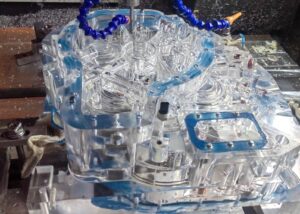
Addressing Surface Defects After Cutting
After milling, I address surface imperfections by using polishing or sanding techniques to smooth the polycarbonate parts. For applications requiring high transparency, I use vapor polishing, which effectively enhances clarity by melting the surface layer, eliminating tool marks, and providing a high-gloss finish. This process is crucial for achieving the optical clarity required in industries such as automotive and medical device manufacturing.
Common Post-Processing Methods
Gas Polishing: I use gas polishing to achieve a smooth, glossy finish on polycarbonate parts. This process enhances the surface quality by removing imperfections, ensuring a high-quality, flawless appearance without causing heat-related distortions.
Surface Hardening: In order to improve scratch resistance, surface hardening treatment is required. This process significantly enhances the durability of polycarbonate parts, making them better suited for high-wear environments, ensuring they maintain their integrity over time.
Anti-scratch Coating: Anti-scratch coating is often applied to polycarbonate parts to increase their resistance to surface damage.These coatings not only increase durability but also help preserve the material’s optical clarity, which is especially important for applications where transparency is crucial.
The Future And Innovations In Polycarbonate Milling
The future of polycarbonate milling is marked by advancements in material integration and CNC technology. New composite materials combining polycarbonate offer enhanced strength, heat resistance, and lightweight properties. Additionally, CNC technology is evolving with more automation, enabling faster, more precise machining and reducing human error, ultimately improving efficiency and quality in polycarbonate part production.
Common Applications Of Polycarbonate
| Industry | Typical Components | Material Advantages | CNC Machining Benefits |
| Automotive | Headlight lenses, dashboards, protective windows | Impact resistance, heat resistance, lightweight | Glass alternative for lighter, safer designs |
| Aerospace | Cockpit canopies, control panels, lighting units | High clarity, vibration resistance, UV stability | Enables precise contour milling with optical finish |
| Medical | Monitor housings, infusion parts, clear shields | Biocompatible, sterilization-safe, durable | Ideal for high-precision and heat-resistant components |
| Electronics | Connectors, casings, optical parts | Electrical insulation, clarity, flame retardant | Suitable for micro-milling and safety-critical parts |
| Industrial | Machine guards, viewing panels, sliders | Impact resistant, dimensionally stable | Ensures tight tolerance and consistent assembly |
| Consumer Goods | Transparent covers, lighting housings, control panels | Lightweight, scratch-resistant, aesthetic | Easily polished for premium finish and appearance |
| Construction & Lighting | Skylights, lamp diffusers, protective sheets | UV-resistant, high light transmission | Excellent for outdoor and architectural use |
| Security & Optics | Explosion shields, viewing windows, lenses | High transparency, impact strength | Enables optical-grade precision and durability |
Integration Of New Materials And Processes
Combining Polycarbonate with Other Composites: The integration of polycarbonate with advanced composites, such as glass fiber-reinforced polycarbonate (PC+GF), is driving improvements in material properties. These composites enhance polycarbonate’s strength, impact resistance, and thermal stability, making them ideal for applications requiring superior durability and lightweight characteristics, such as aerospace and automotive industries. These innovations enable the production of parts that withstand higher operational stresses while maintaining excellent transparency.
Advances in CNC Technology and Automation: Recent advancements in CNC milling machines have significantly improved polycarbonate machining. Automation systems now allow for more precise control, reducing human error and enhancing machining speed. Modern CNC machines with multi-axis capabilities optimize the cutting process, allowing for intricate and complex shapes to be produced more efficiently. These innovations are driving increased throughput, reduced setup times, and improved part quality, especially in industries demanding high precision, such as medical devices and electronics.
FAQs
What Is The Best Way To Machine Polycarbonate?
The best way to machine polycarbonate is by using carbide tools with sharp edges to reduce tool wear and prevent material deformation. Slow cutting speeds and feed rates should be used to minimize heat buildup, as polycarbonate is heat-sensitive. CNC milling is often preferred for complex shapes, while water-based coolants are recommended to maintain clarity and reduce friction. For smoother finishes, post-processing methods like vapor polishing can enhance the optical clarity of machined parts.
What Is the Process Of Polycarbonate Machining?
Polycarbonate machining involves CNC milling, drilling, and turning, starting with a CAD model and CAM programming. Carbide tools are used, and slow cutting speeds with water-based coolants prevent overheating. Post-processing like polishing enhances surface quality and clarity. Proper cooling and tool selection ensure precision and material integrity.
Is Polycarbonate Hard To Machine?
Polycarbonate is relatively easy to machine due to its good machinability, but it requires careful handling to avoid issues like cracking or surface damage. To ensure high precision, carbide tools, lower feed rates and proper cooling are required. Polycarbonate’s tendency to soften at high temperatures necessitates controlling cutting speeds to prevent material deformation.
How Are Polycarbonate & Acrylic Different From Each Other?
Polycarbonate is tougher than acrylic, with a higher impact resistance (60-70 MPa tensile strength) and better temperature tolerance (140-150°C heat deflection). Acrylic offers excellent clarity (up to 93% light transmission) but is more prone to cracking and has a lower impact resistance. Polycarbonate is typically more expensive than acrylic due to its superior strength and durability.
Why Is Polycarbonate So Strong?
Polycarbonate is strong due to its amorphous structure, which provides excellent impact resistance and toughness. With a tensile strength of 60-70 MPa and a heat deflection temperature of 140-150°C, polycarbonate can withstand high stress and harsh conditions. Its high molecular weight and robust chemical bonds contribute to its ability to absorb impacts without cracking or breaking.
Conclusion
In conclusion, polycarbonate CNC milling stands out for its precision, flexibility, and efficiency, making it an ideal choice for producing high-performance components across industries like automotive, aerospace, and medical devices. By employing the right machining techniques, tools, and coolants, I ensure top-quality parts with minimal defects. If you’re looking to incorporate polycarbonate into your next project, how can I assist in optimizing your machining process to meet your exact specifications? Feel free to reach out for more tailored advice!

